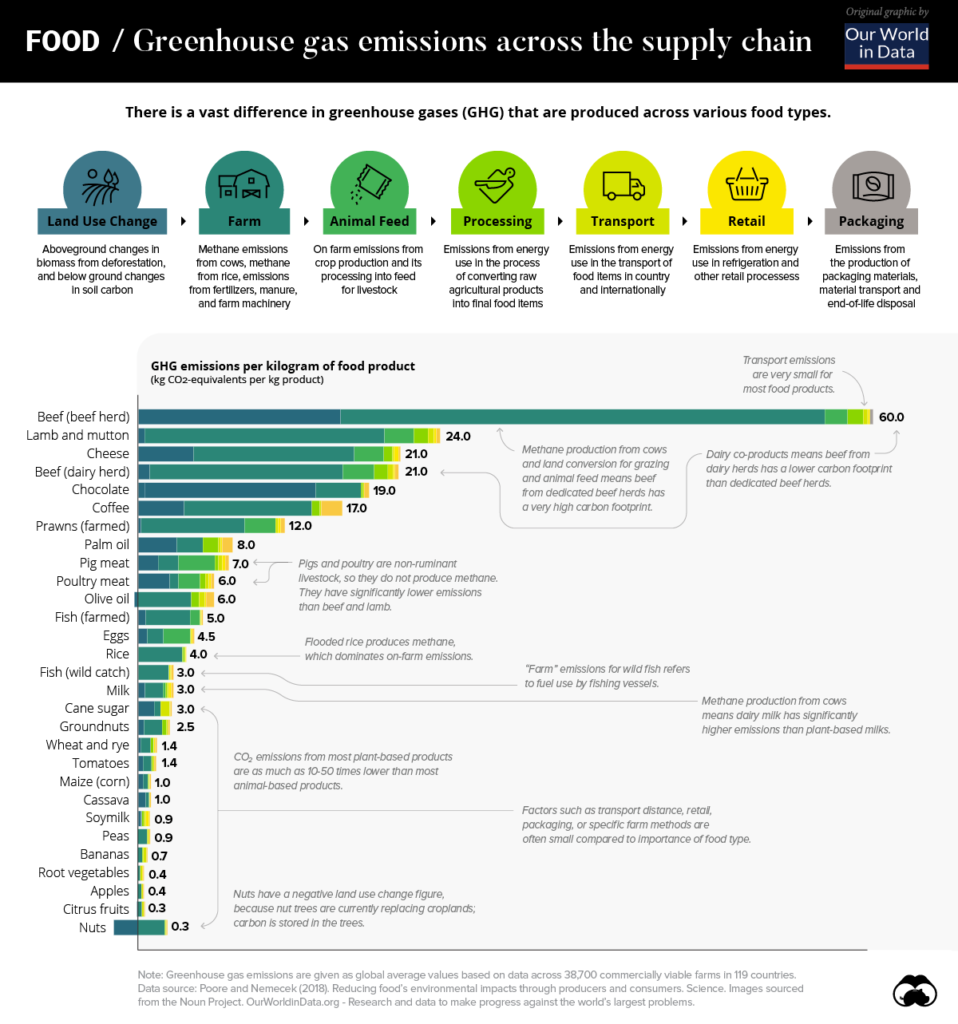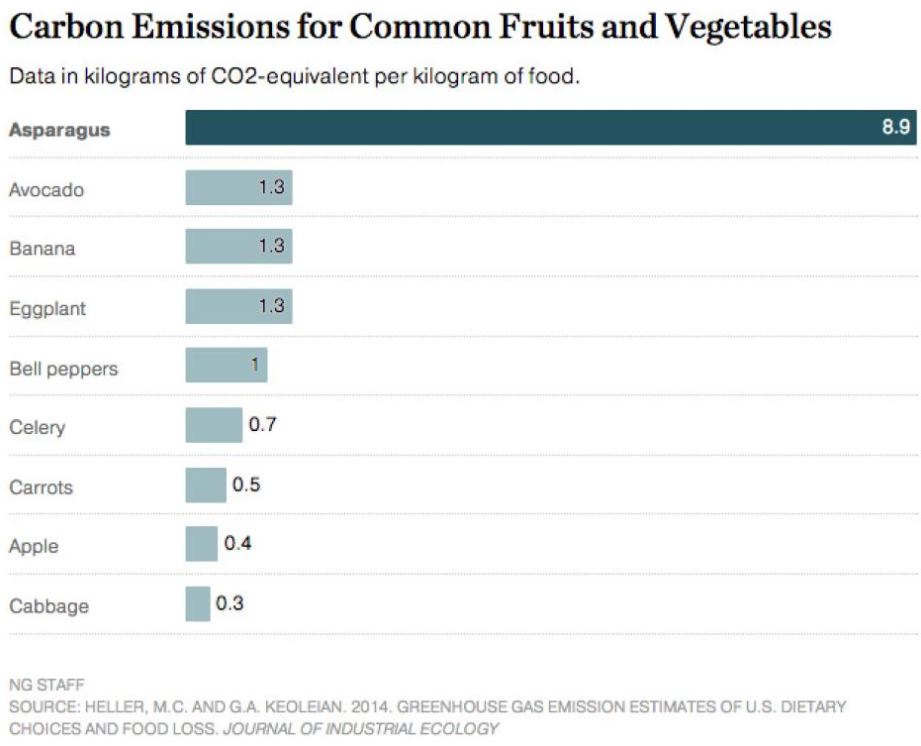Eating your vegetables is one of the best things you can do for your body and for the environment.
Our diets account for 14% of household carbon emissions, and meat is responsible for more than half of the average American’s foodprint – so any meal that emphasizes vegetables over animal protein is an environmental win. But some vegetarian foods have surprisingly serious environmental impacts.
Don’t step away from that salad – even vegetarians can cut carbon from their diet.

Processed and Pricey Foods
You can expect processed foods to have more climate impacts than raw produce. That’s simply because of the energy used to manufacture the product after the ingredients are grown.
The price of some expensive foods reflects a complex production process with a lengthy supply chain that crosses continents. For example, the BBC’s climate calculator confirms that the impact of wine is more than double that of grapes. But unfortunately, there does not seem to be good data on the relative impacts of other common vegetarian foods like protein bars or fruit leathers.
Until footprint labels become as common as nutrition labels, we will have to estimate most of our foods’ impacts based on their primary ingredients. But some vegetarian foods have significant known carbon impacts. Cheese, chocolate, and coffee all produce more climate emissions than pork or poultry and have other significant environmental effects as well.

If you think coffee and chocolate are a perfect combination, you’re not alone. Unfortunately, they both produce more emissions than pork and poultry. Image: 5598375 from Pixabay
Cheese, of course, is part of the same intensive dairy system as milk. Chocolate has been linked to slavery and has significant deforestation impacts, as well as highly polluting farming practices. Fortunately, some chocolate producers practice fair trade and follow more sustainable practices. Coffee is well known for destructive land-use changes and chemically intensive growing methods. Like chocolate, conscientious consumers can find more sustainable and less wasteful options for their morning cuppa.
Source: Visual Capitalist
Vegetables
If you’re standing in the produce aisle deciding what to buy, you might be considering freshness, nutrition, taste, organic labeling, and supporting local farmers. And you should consider other environmental concerns, like whether the zucchini is GMO or the avocados destroyed butterfly habitat. But carbon emissions probably don’t need to be a deciding factor.
According to a 2014 study of fruits and vegetables, most produce generates less than 2 CO2-eq per kilogram of food. That’s less than a third the climate emissions of pork and one-tenth the climate emissions of cheese.
Image source: National Geographic
But note one significant exception: asparagus. Asparagus has a greater climate impact, per pound, than pork. And its impact is more than six times that of the next highest vegetable in the study. How can one green be so intensive? The answer is in the sky.
Air Transport
In general, food production methods account for more emissions than the distance food travels from farm to market. It is true that transport adds to the emissions impact of food. But it is usually not significant relative to the emissions generated by conventional farming practices – even when food is transported by refrigerated trucks, which are much more polluting than cargo ships or rail. One life cycle analysis found that transporting food to market generated only 4% of food’s climate impact.
But there is one very significant exception: air-freight. Although only a few foods are air-freighted, those foods emit 50 times more climate emissions than food that is shipped by boat.
Unfortunately, it can be hard for consumers to identify these foods. No labeling system accounts for the mode of travel by which an item reaches the grocery store. This is where buying local becomes important. Since produce often has country of origin labels, avoiding perishable foods that have traveled a long way is a good rule of thumb for avoiding air-freight emissions. Asparagus, bell peppers, green beans, cherries, and berries are common air-travel culprits.

Tempted by out-of-season berries? They might have a big transport carbon footprint. Image by Couleur from Pixabay
If a type of food is totally out of season where you live, it might have been grown in a greenhouse (which also uses a lot of energy and chemicals). But there is a good chance that it grew half a world away and traveled by air to reach the market while still fresh.
The Seasonal Food Guide app outlines the seasonality of produce state-by-state, so you can tell what fruits and vegetables are in season (and thus might be grown locally) when you are shopping. And of course, you can also grow your own produce to minimize the distance from the plant to the plate.
The post Cutting Carbon From Your Vegetarian Diet appeared first on Earth 911.










